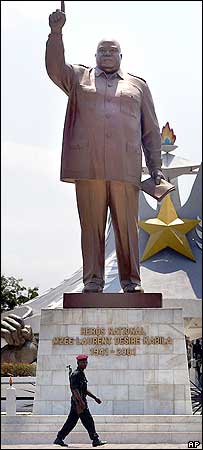Institute for Far Eastern Studies (IFES)
NK Brief No. 09-10-26-1
10/26/2009
Companies in the Kaesong Industrial Complex (KIC) are pushing for permission to transport goods manufactured within the complex along the railway running from Kaesong to Sinuiju and the highways connecting Kaesong, Pyongyang, Sinuiju and the Chinese city of Dandong.
Currently, the majority of goods exported from the KIC flow through the South Korean port of Incheon. They are then distributed elsewhere after arriving at the Chinese port of Dalian. This route is expensive and slow. Shipping by sea costs 1,900 USD per container and takes as many as 10 days, while if the railway infrastructure was built up between Kaesong and Sinuiju, both the cost and the time could be significantly reduced.
Seventeen percent of Kaesong goods are exported not only to China, but to Europe, the Middle East and Russia. In the mid- to long-term, Kaesong needs to be connected with Rajin-Sunbong, so that goods can be distributed throughout Russia and Europe via the Trans-Siberian Railway. In order to make this happen, companies within the KIC are seeking to attract foreign joint-ventures and investments while at the same time lobbying North Korean authorities in an effort to convince them of the need for such land transportation infrastructure.
These companies are also pushing for improvements in the highway spanning the 160 km between the KIC and Pyongyang and the injection of KIC goods into the Pyongyang markets, where they could compete with Chinese imports. One part of this effort is promoting the attachment of ‘Made In DPRK’ labels to goods produced in these factories.
It appears that North Korean authorities have been receptive to these ideas, but questions still remain on the logistics of the project. One source has said that the North Korean Central Special Direct General Bureau has shown interest recently in the idea of including KIC goods in the annual Pyongyang International Trade Fair.
On the one hand, the number of North Korean workers in the KIC has now topped 40,000; but on the other hand, given the number and size of the factories in the complex, the factories are about 26,000 workers short of full capacity. The effort to find suitable workers means that now people from Sariwon, Pyongyang and Hamheung have been brought in. Companies in the KIC are adamant that construction of dormitories in the complex needs to be sped up. At the same time, North Korean authorities are demanding that workers be paid according to their level of education, job description, and experience.
For the first time in 13 months, trade between the two Koreas began to rise again. In September 2009, inter-Korean trade amounted to 173.17 million USD, a 2.6 percent rise over the 166.86 million USD recorded in 2008. The economy has shown signs of recovery since last July, and as inter-Korean relations have inched toward improvement, trade has also risen.

